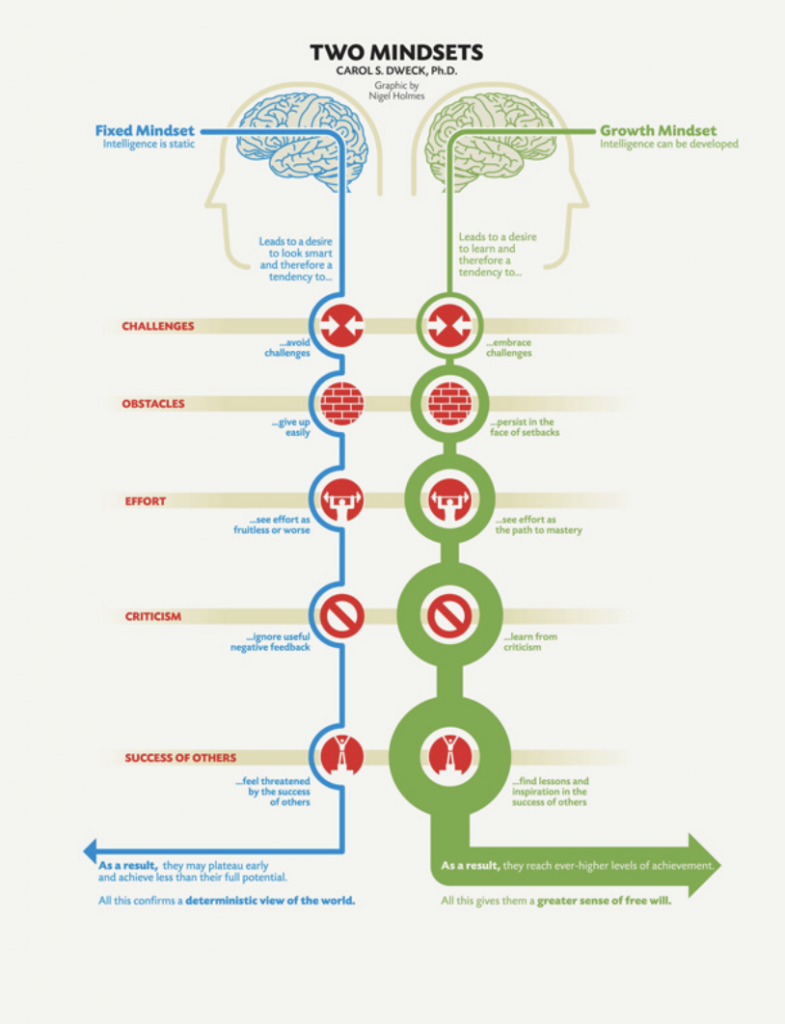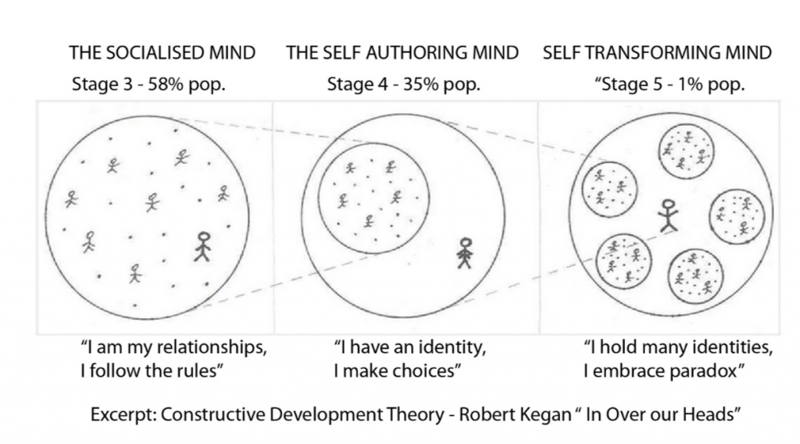Improve your Marketing Ops every week
Subscribe to our blog to get insights sent directly to your inbox.
Confront your process problems head on with a Sherpa by your side.
Explore support options that are tailored to meet you wherever you are on your climb.
Learn from the stories of marketers already on the road to process improvement.
Featured Resource

State of Agile Marketing
Learn from 8 years of study on how marketers are increasing their agility.
Download Report
This is part two of the Agile Marketing Mindset blog post, where I’m taking a break from our Agile marketing measurement series to talk about something much more fundamental: the Agile mindset.
In the first part "Free Your Agile Mindset," we explored the Agile Onion and how an Agile mindset has the biggest impact on your Agile transformation.
In this part, I’ll show you how to transition from a fixed mindset to an Agile marketing mindset using Kegan’s Adult Development Theory. That may sound a bit high level, but this powerful shift makes it possible to:
At AgileSherpas, we run into marketers who believe they’re doing Agile marketing. Yet they're seeing little benefit. Their first question is, “Why? Why aren’t my practice changes delivering the results I’m after?”
Typically the answer is that they’re trying to apply Agile techniques while still using a fixed mindset.
Whether in a specific function like marketing or broader business agility, having an Agile mindset can be challenging at times. The Agile mindset is akin to the growth mindset, named from Carol Dweck’s Mindset: The New Psychology of Success.

But how do you help yourself and your marketing team acquire and build the Agile growth mindset even if you're in a very traditional industry like HLS?
Robert Kegan is a developmental psychologist and author. He was a professor in Adult Learning and Professional Development at the Harvard Graduate School of Education and the Educational Chair for the Institute for Management and Leadership in Education.
In his book The Evolving Self, Kegan explores human life problems from the perspective of a single process which he calls meaning-making, the activity of making sense of experience through discovering and resolving problems.
Kegan’s Theory of Adult Development outlines five distinct stages of development. In this post I’ll focus on stages two through five, because they’re most applicable to shifting from fixed to Agile mindset.
The goal is to pay attention to which stage you and your team are at. Only then can you deliberately work to shift from a fixed to an Agile mindset.
Since you’re unlikely to be in your early childhood if you’re considering Agile marketing, we’re going to skip this stage for the purposes of this article.
In this stage, individuals view people as a means to get their own needs met, as opposed to a shared internal experience (how we feel about each other). They care about how others perceive them, but only because those perceptions may have concrete consequences for them.
For example, when stage two friends choose not to lie to each other, it’s because of a fear of the consequences or retaliation, not because they value honesty and transparency in a relationship.
Moreover, individuals follow along with rules, philosophies, movements, or ideologies because of external rewards or punishments, not because they truly believe in them. For example, a person in stage two may not cheat because they’re scared of the consequences, not because it goes against their personal values.
They are doing it because their boss told them to, and not because they believe in Agile or see the value. At this stage marketers tend to work mostly with their ego, get defensive, and ignore useful negative feedback.
They could also feel threatened by the success of others on their Agile team.
In stage three, external sources shape our sense of self and understanding of the world. Whereas in stage two the most important things were our personal needs and interests, in stage three, the most important things are the ideas, norms, and beliefs of the people and systems around us (i.e. family, society, ideology, culture, etc.).
This stage marks the first time we begin to experience ourselves as a function of how others experience us. For example, we take an external view of our ourselves (“They’ll think I look stupid”) and make it part of our internal experience (“I am stupid”).
For many people, social maturity seems to stop here.
However, the potential for continued development continues onwards and upwards. Here’s what someone who ends their development in stage three is like:

This is the equivalent to the Dependent Stage in Stephen R. Covey’s “Seven Habits of Highly Effective People." In other words, marketers at this stage want you to tell them what to do. They can work well on teams and understand Agile values, principles, and ceremonies.
In the fourth stage we can define who we are rather than be defined by other people, our relationships, or the environment. We understand that we are a person, with thoughts, feelings and beliefs that are independent from the standards and expectations of our environment.
We can now distinguish the opinions of others from our own opinions to formulate our own “seat of judgment.” We become consumed with who we are — this is the kind of person I am, this is what I stand for.
In stage four, we:
This is the kind of mind that Agile training intends to encourage. In that mindset, marketers are starting to see the big picture. They develop empathy and look at how they deliver value to customers.
Only 1% of adults reach stage five. In this stage one’s sense of self is not tied to particular identities or roles, but is constantly created through the exploration of one’s identities and roles and further honed through interactions with others.
This is similar to the Buddhist concept of an evolving self — a self that is in constant flux, ever changing. It's:
At this stage the team and individual members are looking for self ownership. They can quickly identify and correct flaws in their process, ultimately influencing and owning the entire end to end process. The result is better handling of complex tasks and prioritization of the most important work.
Self-Transforming Agile marketers quickly learn from criticism and find lessons and inspiration in the success of others. At this stage marketers achieve technical mastery or the Ri in Shu Ha Ri.
Now that you’ve reviewed the stages, which stage do you think you’re at? And where would you like to be?
According to Kegan, we all believe we’re in a higher stage than we are. So pay close attention to how you behave across contexts and with different people (Agile marketing coaching can also help you navigate these questions).
Most of the time we’re in transition between stages and/ or behave at different stages with different people (i.e. Stage 3 with a partner, Stage 4 with a coworker).
Consider both yourself and your marketing team (Agile or otherwise), as we prepare for the final piece in this series and bring our Agile development plans to completion.
Subscribe to our blog to get insights sent directly to your inbox.
Subscribe to our blog to get insights sent directly to your inbox.